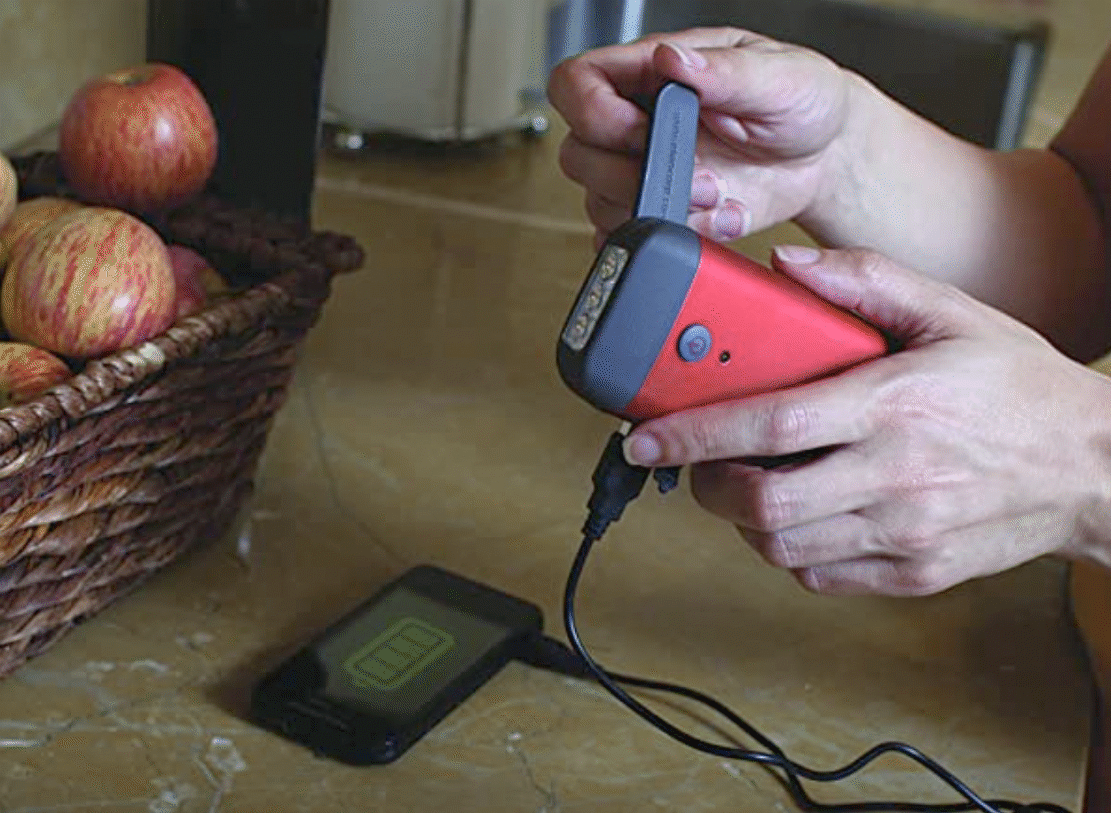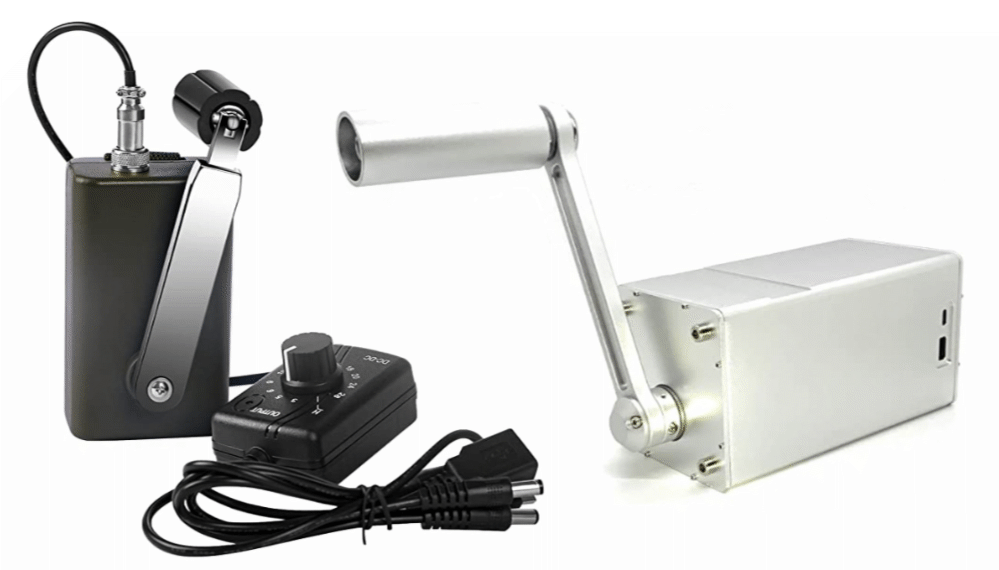
Sometimes the power grid is down, the sun isn’t shining, the wind isn’t blowing, there’s no flowing water, you’re out of fuel, you don’t drive a hybrid or EV, and all the batteries in all your devices are dead. It’s not likely all those things would happen at once, but there are people who worry it could. That’s where human-powered generators might come to the rescue. There are several types of hand-cranked generators with different features and levels of power production.

At the most basic end of the scale is the $10 American Red Cross phone charger and flashlight. Rather than charging a self-contained battery—similar to a portable power pack—it charges directly to your phone’s battery. Reports say it takes about 20 minutes of cranking to charge a dead phone enough to make a call. That call could make all the difference if, say, you get in trouble while hiking and, oops, you exhausted the phone’s battery on photos and videos. Or you’re not in trouble and just want to take more pictures. The price is a bargain, even for something you hope you never need to use.

At the next level up are several combination generator-charger-flashlight-radios. These have internal batteries in ranges from 1,000 to 3,000 mAh. That’s not a lot of power, but it’s enough to get small devices functional. Most of these battery packs can be charged via external sources with the crank functioning more as a backup. There are models with built-in solar panels. Some have multiple USB ports. Some have multiple lights. Some of the radios have presets for weather and emergency channels. The prices range from about $20 to $40, with the price generally correlating to power capacity.

The third level moves from the feature loaded gadgets to more serious (and therefore expensive) single-purpose generators putting out significantly more power—20 to 150 Watts and up to 30 Volts. Their cases and cranks are metal rather than plastic. And they’re priced in the $150 to $300 range. I think you’d need to running out of electricity rather frequently to justify getting one of these bad boys.

For those who want big power but whose arms tire easily, there are pedal powered generators running from about $260 to $450. There’s a folding model that claims 120 Volts of output. That’s wall current. Some have USB ports or 12V outlets, others a universal, multinational outlet rather than USB ports, so you can plug in appliances directly, use your digital devices’ wall warts, or charge large batteries and portable power stations. And you’ll get a good leg workout while you’re at it.
Finally, if you have a bicycle, a bicycle trainer stand, a spare automotive alternator, some electrical knowhow, scrap lumber or metal, and some tools, you can make a bike-powered generator. Instead of an alternator, there are also dynos intended for this type of bicycle electricity production.
Personally, unless I were a bunker dweller or spent a lot of time where other forms of electrical production were insufficient, I would get only the pocket-sized American Red Cross generator for those rare moments I find myself with a dead phone far from my rig.

I’ve got a hand-crank radio/flashlight since Hugo (yup, it’s that old), but it still works! It won’t charge a phone, but I can still listen to the news. I think I’ll invest in one that will charge my phone, though.
Thanks for the information, Al!
Thank you for this information. Altho I am now in my 80’s and don’t boondock anymore. The small phone charger could be a lifesaver.
Yes, I agree with Helen. I have the hand crank radio, but also the Jackery in 2 sizes, so should be set!
With prayers we can all make it!
My brother in law gave my Mom some after Katrina. My adult children now own them and they still work!
They have certainly come in handy over the years!
These hand cranks are pretty cool! I used have one of the old hand crank ones that would power the radio on it, but the new one that can charge a cellphone may be worth the ten bucks. Thanks
Great article! In my pre-prepper days, I was in a black out storm with a flooded basement, a hand-crank flashlight radio and one candle. It took about 5 minutes of cranking to get 3 minutes of radio. I also lit the candle. I was terrified and traumatized by the storm. So I kept cranking and listening to the radio until I finally fell asleep. I was so grateful for the little radio. After that I became a prepper.
Thank you for reminding me of the hand cranked radio/flashlight combo from the Red Cross that I used to have in my preps. I am adding it to my list of necessities. Worry reliever!